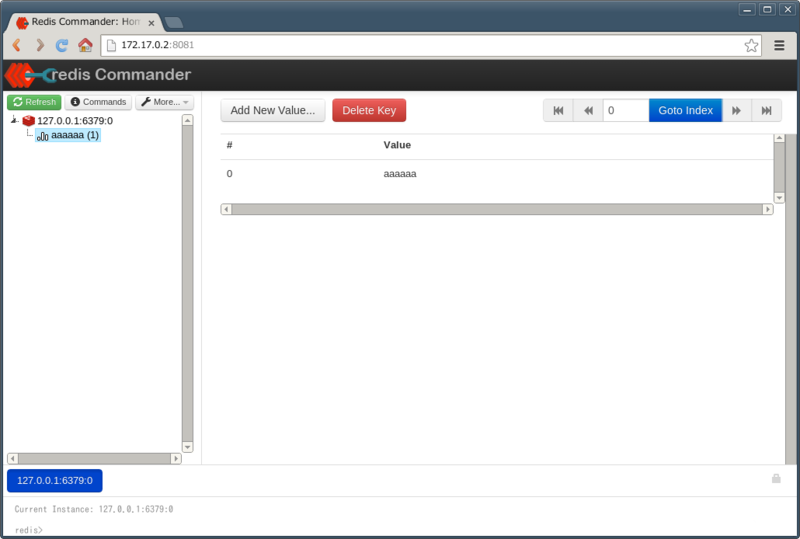

- #Monit docker containers how to
- #Monit docker containers install
- #Monit docker containers software
- #Monit docker containers series
In this post, I’ll discuss what’s important to monitoring Dockerized environments, how to collect container metrics you care about, and your options for collecting application metrics.
#Monit docker containers series
This is the first in a series of blogs on monitoring Docker containers. Along the way, we’ve learned how to monitor our Docker-based infrastructure and how to get maximum visibility into our applications, wherever and however they run. Every single application we manage executes within a Docker container. Splunk Infrastructure Monitoring has been running Docker containers in production since 2013. However, operationalizing Docker can also mean more complexity, an abundance of infrastructure and application data, and greater need for monitoring and alerting on the production environment. The Docker movement gives product teams more freedom in their technology choices since they’re empowered to deploy and manage their applications in production themselves.
#Monit docker containers software
Containers ready for cloud architecture brought production operations closer to development and helped make microservices the backbone of a more flexible, aggressive approach to building software architecture. Ctop could easily be a first line of defense in troubleshooting Docker containers.Docker shook the DevOps world a couple of years ago. This tool doesn’t offer extensive information, but it will give you just enough information to keep you aware of how your containers are performing. Just enough infoĪnd that’s pretty much the gist of using ctop on Linux for viewing details of your containers. To exit out of ctop, type q, and you’ll be returned to your bash prompt. To exit out of the expanded view, type q. If you select a container from the listing and hit Enter, you will see a bit more information laid out in easy to read graphs ( Figure C). To clear a filter, type f again, and then hit Enter on the keyboard. This is incredibly helpful when your Docker server hosts numerous containers. Type the name of a container and ctop will display only the results that match the filter. With ctop open, hit the f key on your keyboard to open the filter ( Figure B). Say you have a large number of containers on your server and want to check on the resource usage of a particular deployment. With ctop, you can easily filter your containers. However, it’s nearly hogging up all of the system resources on my virtual machine, so I might want to consider migrating that container to a beefier virtual machine. That particular container is an instance of Only Office, so it makes sense it would be using a larger amount of resources.

Once you have the tool open ( Figure A), you’ll see all of your currently active containers listed.Īs you can see, one of my containers (wonderful_stallman) is using 1.37GB of memory. To do so, we’ll pull down the executable from Github, move it into /usr/local/bin, and give it the necessary permissions with the following commands:Īt this point, you can start up ctop anytime with the command ctop.
#Monit docker containers install
We can install ctop as a local application. The problem with using ctop in this manner is that you must issue the above command every time you wish to run ctop. The above command will pull down the necessary image, deploy the container, and drop you into the app. To do this, log into your container server and issue the following command to deploy the container:ĭocker run -ti -v /var/run/docker.sock:/var/run/docker.sock quay.io/vektorlab/ctop:latest First, we’ll install ctop as a container. There are two ways to install ctop: As an app or a container.

I’ll demonstrate on a Ubuntu 16.04 platform, but ctop can be installed on nearly any Linux distribution. The tool is easy to install, and even easier to use. Although it may not offer a massive amount of features, it does the job and does it well. Ctop even allows you to filter what you’re viewing, and gives you an expanded view of a selected container. With this app, you can get a quick overview of your containers, their names, IDs, and how much CPU, Memory, and Network Rx/Tx data. That’s right, one of the best means of monitoring your containers is an open source tool, found on Github, called ctop. However, do you know how well those containers are performing? If you’re familiar with Linux, you might wish there were an top/htop app geared specifically for containers. Chances are you’ve already done so and have numerous containers running on your network. If Docker is your container service of choice, you know how easy it is to create and deploy containers. Jack Wallen shows you how to install, and use ctop for quick and easy container monitoring on a Linux Docker server. How to monitor your Docker containers with ctop


 0 kommentar(er)
0 kommentar(er)
